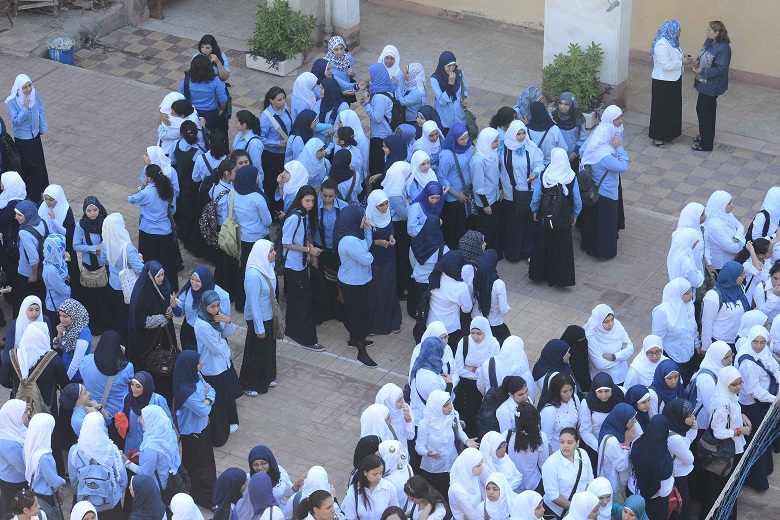TEHRAN: Iranians will go to the polls on June 12 to elect a new president. While some argue that President Mahmoud Ahmadinejad’s re-election is a foregone conclusion, the outcome is, in fact, not at all clear.
Iran’s Supreme Leader, Ayatollah Ali Khamenei, has repeatedly said in public settings that he will not declare his preference among the candidates. Indeed, in Mashad on March 21, Ayatollah Khamenei said, “There were some rumors that I support a special candidate for the presidential elections. But I have one vote, and I would not determine a certain candidate because the people themselves should choose their candidates based on their own knowledge.
So how will the Iranian people weigh their votes? To answer, one needs to understand the composition of the Iranian electorate. With the voting age set at just 16 years, Iran has roughly 48 million eligible voters. Turnout averages 60-65 percent in presidential elections, implying that around 29 million votes are likely to be cast.
Analysts point to several electoral cleavages, particularly the urban-rural split and socioeconomic status. Moreover, a key determinant of voting behavior in the upcoming elections is likely to be generational. Some 46 percent of the electorate is under the age of 30. In previous elections, younger voters have turned out in greater numbers than their elders, leading some to predict that half of the voters will be in the 16-to-29 age bracket. The number of potential first-time voters (16 to 19 years old) is estimated at six million.
Several factors distinguish members of this group from the rest of the Iranian electorate. They are more educated, more urbanized, and more internationally oriented than previous generations. More of them are university educated, and, of this group, a majority is female. They have branched out into new lines of work and social engagement, as inventors, entrepreneurs, and bloggers.
No candidate can be elected president of Iran without significant support among younger voters. Age, not social class, will determine the outcome of June’s election.
Like all Iranians, younger voters are focused on economic issues, particularly the difficult combination of high inflation and high unemployment. The populist policies of the past four years have not brought economic improvement.
Younger Iranians have a particular economic concern as well. With so many of them graduating from universities, they suffer from a mismatch between their qualifications and the jobs on offer. Underemployment is deeply frustrating to them.
They also want a more liberal social environment that would loosen restrictions on their dress, broaden access to cultural products like film and music, and enlarge press freedoms. They want university campuses, in particular, to be more open.
Finally, younger Iranians are tired of Iran’s international isolation. They want Iran to succeed – and to be recognized for its success – in sports, arts, and education at an international level.
As of this writing, only two presidential candidates have declared themselves: former Prime Minister Mir Hossein Moussavi and former parliament speaker Mehdi Karroubi. Assuming that Ahmadinejad seeks re-election, this line-up lacks any candidate with clear appeal to the youth vote. Given their dissatisfaction, it would be natural for young voters to take out their frustrations on Ahmadinejad.
One seemingly unrelated event to watch: in the week before the presidential vote, Iran will play two critical football matches as part of the qualifying round for the 2010 World Cup. If Iran fails to qualify, this could turn some young voters against the incumbent.
Among the other candidates, who will pick up this slack?
Moussavi, Iran’s prime minister between 1981 and 1989, is barely known to young voters. However, his campaign has been hinting that, if elected, Moussavi will loosen some social and cultural restrictions.
Karroubi, too, is handicapped among the young. Many consider him to be an old, out-of-touch cleric with no feel for their concerns.
Former President Mohammad Khatami, who openly considered trying again for the office, would have been a strong candidate for young voters. His decision not to run disappointed many of them.
Standing in the wings is one possible candidate who might take up where Khatami left off and address the economic and cultural concerns of young Iranians. Though he has not announced his candidacy, Mohammad Baquer Qalibaf, now Mayor of Tehran and formerly the country’s chief of police, has a relatively moderate track record and an image of someone who can get things done.
But Qalibaf still has not taken the plunge. If he doesn’t, and if no younger candidate emerges, the youth bloc in Iran’s electorate may have nowhere to turn. Without a voice for their concerns, Iran’s young people face the prospect of increased frustration, whatever the outcome of the election.
Bijan Khajehpouris a Tehran-based strategic consultant and the Chairman of the Atieh Group. This commentary is published by DAILY NEWS EGYPT in collaboration with Project Syndicate (www.project-syndicate.org).

